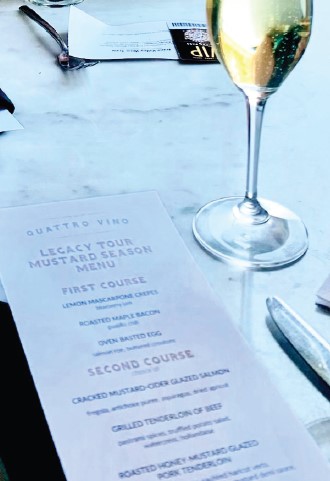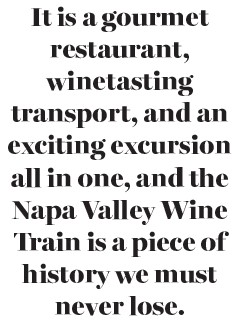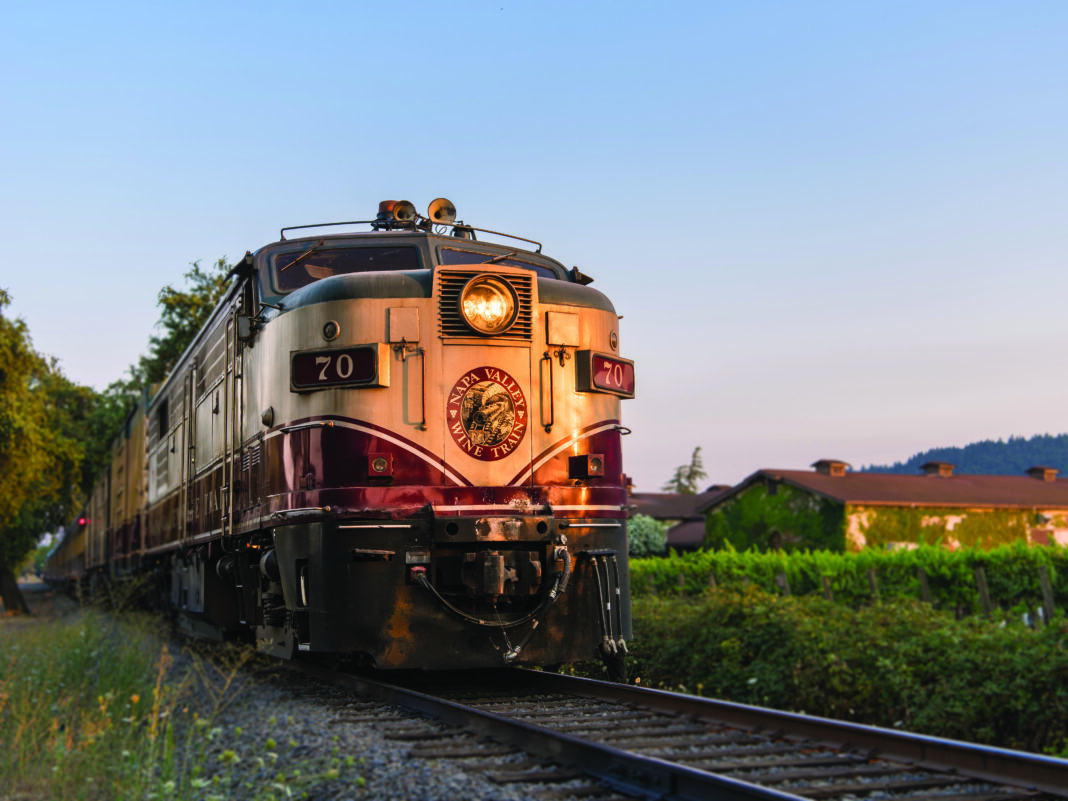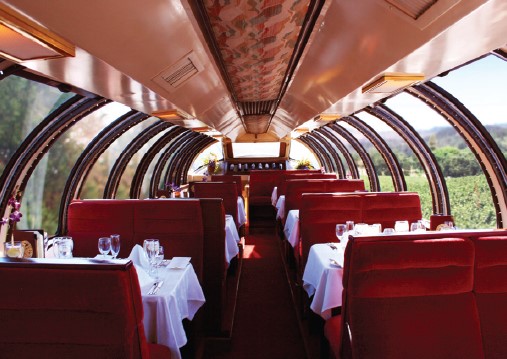When California pioneer Sam Brannan found gold in 1848, he at once started a business selling mining supplies, became California’s first millionaire, and published California’s first newspaper, the California Star. Flush with his newfound riches, Brannan next bought assets to build up the Napa Valley area. One of his most notable developments was the Napa Valley Railroad (NVRR), which he imagined would bring tourism to a part of the valley that reminded him of his hometown, Saratoga, New York, with hot springs and thermal baths in each place.
Because of those hot springs, Brannon often referred to Napa Valley as “California’s Saratoga.” One day, while hosting a tourist train trip to the north of the valley where the thermal baths lie, Brannon shared the area’s nickname with the group. However, having drunk a few glasses of the local wine, he accidentally slurred the words, saying instead, “Calistoga” — and the name stuck.
The precursor to today’s Napa Valley Wine Train, the NVRR predated the first transcontinental railroad by over twenty years. Then, in 1885, Southern Pacific bought the line and expanded operations, and shortly after the railroads opened the Great West to travelers, the golden age of travel began. At that time, railroad journeys were the only way to travel long distances in comfort and luxury—and presidents, aristocrats, and dreamers alike glided along while dining, relaxing, and enjoying the view.
Railroad travels’ boomtime waned with the popularity of the automobile, and NVRR passenger service stopped in the 1930s. A century after Brannan built it, the line traveling north of Napa stopped, and the rails from St. Helena to Calistoga were removed.
Luckily, it was not long before another Napa Valley pioneer, Vincent DeDomenico, formed the NVRR Operating Company, and bought and refurbished the line with the Wine Train concept in mind. The Napa Valley Wine Train we know today has been running since 1989 and has carried more than two million passengers, with an average of two runs and 320 passengers daily.
 In the 1980s, the Napa Valley Wine Train began running from Napa to St. Helena. More recently, the DeDomenico family sold the Napa Valley Wine Train to Noble House Hotels & Resorts in partnership with Brooks Street. The company began revamping the Wine Train’s guest experiences.
In the 1980s, the Napa Valley Wine Train began running from Napa to St. Helena. More recently, the DeDomenico family sold the Napa Valley Wine Train to Noble House Hotels & Resorts in partnership with Brooks Street. The company began revamping the Wine Train’s guest experiences.
Knowing the Wine Train’s history is essential to understanding why it is critical to today’s Napa Valley. With its cars and locomotives dating back a century, the Wine Train is one of the oldest vintage passenger trains running today and is considered the most authentic to the Gilded Age.
Other wine trains include South Africa’s Wine Tram in the Franschhoek wine region, the Presidential Train through Portugal’s Duoro region, Mallorca Wine Express Train, and the wine train in Australia’s Barossa Valley.
Riding the Wine Train is a combination of nostalgia and adventure; it is easy to imagine the amazement of the first travelers as they were wined and dined and entertained by the experience and views as they rode the rails. Today, the ancient train supplies modern conveniences like air conditioning, but the feeling of train travel during the time of the pioneers is still there. The difference lies in the miles of vineyards in every direction and mammoth world-class wineries lining the road as the train chug-chugs along Napa’s Vine Trail, whistle blowing as it passes crossroads along the way.
For those looking for a bucket-list experience, the Wine Train delivers. Polished silver, white linen napkins, gourmet food and wine, and impeccable service conjure the golden days of travel but serve as a backdrop to the thrill of riding a vintage train through one of the most scenic parts of America.
The Wine Train welcomed aboard Executive Chef Rodrigo Cuadra, who creates exquisite, curated dishes for the menus, like a savory short rib dish on the Gourmet Express experience and an all-new breakfast for the Legacy experience. The first thing that happens when you board the Legacy, guests are given a selection of meal options for each course that day. The tour includes a delicious four-course Napa Valley-style gourmet meal with culinary and wine stops at two Napa Valley wineries and a third stop at the Napa Valley Vintners sign for an outside tasting on their Open Air Car. The fourth course, dessert, arrives on the return ride to Napa.
 But the Wine Train is more than an outstanding restaurant on rails; the proprietors have upped the ante each year, adding new and innovative flair to the offerings and events such as murder mystery dinner theater and holiday excursions.
But the Wine Train is more than an outstanding restaurant on rails; the proprietors have upped the ante each year, adding new and innovative flair to the offerings and events such as murder mystery dinner theater and holiday excursions.
There are many ways to enjoy the Wine Train, from luncheon and dinner excursions to all-day wine tastings stopping at wineries like Charles Krug, V. Sattui, and Grgich Hills Estate. Luckily, the train conductor acts as the designated driver so visitors can experience all the excursion offers without worry.
The train has a daily schedule of programs, but it is also available for private, customized tours on request. Twilight Private Experiences include appetizers, wine tastings, dessert, and coffee upon return, in addition to transportation to an evening dining experience at the wineries, open only to Napa Valley Wine Train guests. It is common to find groups and couples celebrating birthdays, weddings, and anniversaries aboard; the singular Wine Train experience makes for a unique and treasured gift.
There is so much on offer, but the collection of restored early-20th century Pullman cars must be given their due. The restoration and maintenance involved in keeping the trains and the Old West spirit alive in the Napa Valley deserves praise.
It is a gourmet restaurant, winetasting transport, and an exciting excursion all in one, and the Napa Valley Wine Train is a piece of history we must never lose. It symbolizes the nascent Napa Valley wine region and a throwback to the Gilded Age—a time when life and travel were elegant, unrushed, and luxurious. Luckily, one can still touch a piece of that history today.
FOR MORE INFORMATION: 707-253-2111 // www.winetrain.com


